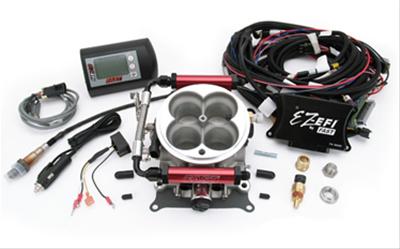Hi All..
I am considering the purchase of a 62 R2 Avanti.. I live high in the foothills of the rockies at about 9200 feet in elevation. As you can imagine that is most challenging for a carbureted car.. I had a 76 GMC Motorhome till last season with a 455 Olds.. It was always an issue with running rich until I went with a TBI system for it. That solved all kinds of problems. No more Vapor Locks and being able to just turn the key and start it was great!
My question is... Has anyone done this with a supercharged Studebaker? The idea of having electronic controls and an O2 sensor should solve all of the altitude compensation problems inherent with the carburetor..
I can't think of any reason one wouldn't work on a blow through system like the R2 but maybe some of you do...
Eve if I jet the car to run at my altitude.. A run through town with 4000 feet difference in altitude would be a challenge.. Let alone take a trip to near sea level..
Any Ideas or comments?
Ron Husak
Conifer, Colorado
I am considering the purchase of a 62 R2 Avanti.. I live high in the foothills of the rockies at about 9200 feet in elevation. As you can imagine that is most challenging for a carbureted car.. I had a 76 GMC Motorhome till last season with a 455 Olds.. It was always an issue with running rich until I went with a TBI system for it. That solved all kinds of problems. No more Vapor Locks and being able to just turn the key and start it was great!
My question is... Has anyone done this with a supercharged Studebaker? The idea of having electronic controls and an O2 sensor should solve all of the altitude compensation problems inherent with the carburetor..
I can't think of any reason one wouldn't work on a blow through system like the R2 but maybe some of you do...
Eve if I jet the car to run at my altitude.. A run through town with 4000 feet difference in altitude would be a challenge.. Let alone take a trip to near sea level..
Any Ideas or comments?
Ron Husak
Conifer, Colorado
 .....
..... .
.





Comment